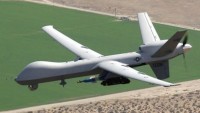F-35 ‘Magic Helmet’ with its HMDS is Lighter and Deadlier
| Arthur Dominic Villasanta | | Jun 13, 2016 09:22 AM EDT |
F-35 HMDS
A lighter version of the Gen III Helmet Mounted Display System (HMDS) for the F-35 Joint Strike Fighter is expected to be delivered in November. Wide scale rollout of the new HMDS to US Air Force fighter pilots will take place in 2017.
The People's Liberation Army Air Force has no HMDS comparable to the Gen III since its fifth generation fighter, the Chengdu J-20, is still under development. Pilots of the F-22 Raptor are expected to receive their own HMDS by 2020.
Like Us on Facebook
Rockwell Collins, maker of the Gen III, claims this HMDS is the world's most advanced biocular helmet-mounted display system. The helmet's integrated head-up display is the first to provide pilots with all the critical information they need on the helmet's visor.
This capability ensures that every mission, day or night, is supported "with unsurpassed situational awareness, tactical capability and safety."
The Gen III helmet includes an improved night vision camera; improved liquid-crystal displays; automated alignment and software improvements. Rockwell Collins ESA Vision Systems LLC also developed the Gen 2 helmet F-35 pilots currently use.
The Gen III, also called the "magic helmet," provides all the information that pilots need to complete their missions in all weather, day or night. This data is projected on the helmet's visor. This also means the F-35 is devoid of the traditional Heads-up Display (HUD) that equips all other U.S. fighters.
The helmet visor projects digitally zoomed-in night vision from the fighter's electro-optical targeting system. Its icons depict threats and targets in the air and on the ground. The F-35's forward looking infrared sensor can project sensor video in a "picture-in-picture" against the ground and sky.
The F-35's Distributed Aperture System (DAS) made by Northrop Grumman streams real-time imagery from six infrared cameras mounted around the aircraft to the helmet. This allows pilots to "look through" the airframe to see an aircraft below them, at their rear and to their sides, hence the helmet's being referred to as a "magic helmet."
The new Gen III helmet uses lightweight materials and has detachable day and night visors. The result is a helmet weighing some 4.8 lbs, probably less. Other refinements mean this helmet can be used by pilots weighing under 136 lbs.
The HMDS controls the F-35's air-to-air missiles such as the AIM-120 AMRAAM, the AIM-9X Sidewinder and AIM-132 ASRAAM.
TagsGen III Helmet Mounted Display System, HMDS, F-35 Joint Strike Fighter, Rockwell Collins
©2015 Chinatopix All rights reserved. Do not reproduce without permission
EDITOR'S PICKS
-

Did the Trump administration just announce plans for a trade war with ‘hostile’ China and Russia?
-

US Senate passes Taiwan travel bill slammed by China
-

As Yan Sihong’s family grieves, here are other Chinese students who went missing abroad. Some have never been found
-

Beijing blasts Western critics who ‘smear China’ with the term sharp power
-

China Envoy Seeks to Defuse Tensions With U.S. as a Trade War Brews
-

Singapore's Deputy PM Provides Bitcoin Vote of Confidence Amid China's Blanket Bans
-

China warns investors over risks in overseas virtual currency trading
-

Chinese government most trustworthy: survey
-

Kashima Antlers On Course For Back-To-Back Titles
MOST POPULAR
LATEST NEWS
Zhou Yongkang: China's Former Security Chief Sentenced to Life in Prison

China's former Chief of the Ministry of Public Security, Zhou Yongkang, has been given a life sentence after he was found guilty of abusing his office, bribery and deliberately ... Full Article
TRENDING STORY

China Pork Prices Expected to Stabilize As The Supplies Recover

Elephone P9000 Smartphone is now on Sale on Amazon India

There's a Big Chance Cliffhangers Won't Still Be Resolved When Grey's Anatomy Season 13 Returns

Supreme Court Ruled on Samsung vs Apple Dispute for Patent Infringement

Microsoft Surface Pro 5 Rumors and Release Date: What is the Latest?













